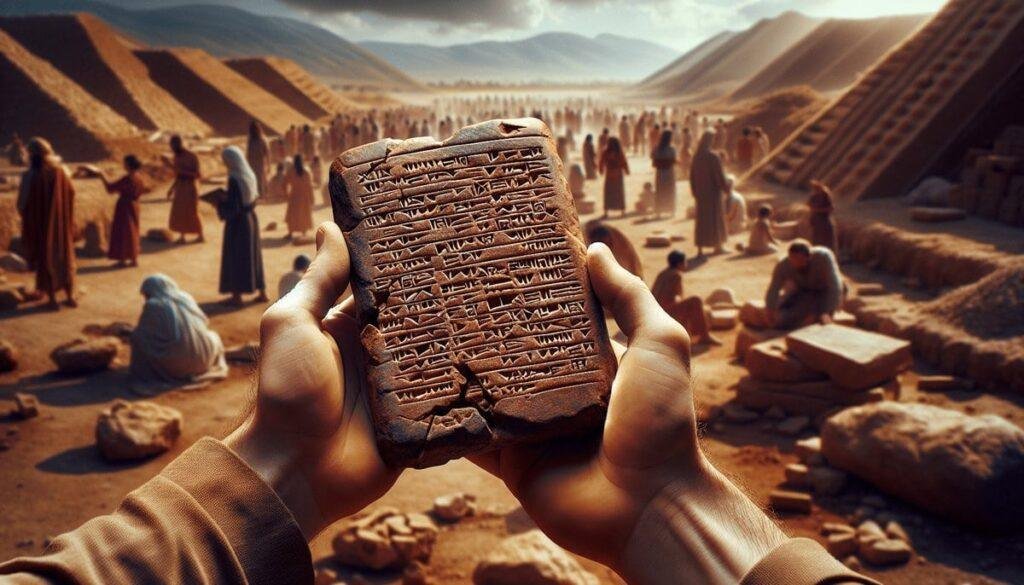Could it be that our understanding of ancient human migrations is on the cusp of a paradigm shift thanks to advances in DNA analysis? As researchers unlock genetic secrets buried deep within ancient bones, the migratory paths of our ancestors are being mapped with unprecedented clarity. This article examines how the transformative nature of DNA analysis is painting a new picture of ancient migrations, particularly in the context of biblical history.
Introduction
The discovery of ancient genetic markers has revolutionized our understanding of human migration patterns. Through DNA analysis, we now have the tools to trace the movements of entire populations over the millennia—offering insights that traditional archaeological methods alone could not provide. This development has profound implications for both biblical archaeology and the broader field of historical research. By unraveling the DNA secrets hidden in ancient remains, we can start to piece together a more detailed narrative of human history. This article will explore the context of recent discoveries, delve into archaeological evidence, and assess the significance of these findings for our understanding of biblical history and human migration.
Discovery Context
Biblical Reference
The intersection of DNA analysis and biblical archaeology is an exciting area of research because it directly engages with some of the most compelling stories in human history. References to ancient migrations abound in biblical texts—from the records of the biblical exodus to the movements of ancient tribes and kingdoms.
Historical Background
Traditionally, archaeologists have relied on artifacts and written records to document the movement of peoples across the ancient world. However, these records often pose more questions than they answer. DNA analysis offers a new lens through which these ancient migrations can be viewed, providing tangible evidence that may confirm or challenge existing archaeological narratives.
Geographic Location
Recent studies have focused on key geographic areas mentioned in biblical accounts, such as the Near East and the Eastern Mediterranean, regions known for their historical significance. The genetics of populations from these regions have been analyzed, revealing genetic connections that suggest complex migration patterns. Such connections include not only the movement of peoples but perhaps the sharing of culture and technology.
Recent Findings
In groundbreaking research, scientists have been able to extract and sequence genetic material from bones dating back thousands of years. For instance, a study analyzing ancient DNA from Israel and other parts of the Near East has unveiled genetic ties across previously assumed isolated communities. These findings help reconstruct the root ancestor lines of groups mentioned in biblical history, such as the Philistines and the Israelites, providing a more nuanced understanding of their origins and interactions.
Archaeological Evidence
Specific Artifacts
Artifact discovery, coupled with DNA evidence, strengthens the case for understanding ancient population movements. Pottery shards, burial goods, and other unearthed treasures tell a story, but DNA adds a biological backlight to that narrative, exposing the genetic tapestry of cultures involved in migration.
Dating Methods
The advent of advanced dating methods has been critical in placing genetic discoveries within a more accurate timeline. Radiocarbon dating, for example, aligns genetic data with historical events, verifying migrations that coincide with known climatic, cultural, and societal shifts documented in ancient texts.
Physical Descriptions
DNA analysis transcends the physical limitations traditional archaeology faces. By examining genetic markers, scientists can infer physical characteristics, health, and even the movement of traits within populations, providing a more personal glimpse into the lives of ancient peoples.
Expert Interpretations
Experts in genetics, archaeology, and ancient history are collaborating to decode genetic patterns found in ancient samples. This collaborative approach leads to well-rounded conclusions that consider genetic evidence and archaeological context. Dr. Sarah C. Sherwood, an archaeogeneticist, notes: “DNA evidence bridges the gaps left by history, offering us direct lineage connections and a clearer understanding of our collective past.”
Significance
Biblical Implications
DNA evidence lends credence to some biblical migration accounts, enabling researchers to confirm or revisit historical interpretations previously considered speculative. These genetic insights can corroborate the dispersal of tribes and indeed provide a tangible link to biblical lineage narratives, thus impacting theological and historical perspectives.
Historical Impact
From a broader historical viewpoint, understanding genetic transformations across millennia underscores the dynamic nature of human civilization. DNA analysis reshapes our comprehension of ancient sociopolitical structures and interactions, presenting a fuller picture of human endeavors in historic epochs.
Modern Understanding
Modern populations’ genetic makeup is a living tapestry woven from numerous ancient threads. Knowing more about these threads enhances contemporary identity narratives and enriches cultural heritage understanding.
Research Status
Research in the field of ancient DNA is continuously evolving, with advancements being regularly reported. Scientific communities await new discoveries that promise to uncover even more intricate details about ancient migrations. Current and future research holds the potential to revise or redefine historical narratives significantly.
Conclusion
The integration of DNA analysis into the study of ancient migrations marks a transformative era in the field of biblical archaeology and beyond. By marrying genetic evidence with traditional archaeological methods, researchers are able to piece together a richer and more accurate narrative of human history. As these fields continue to evolve, future findings will likely challenge our current understandings, opening doors to new questions and insights. Researchers and enthusiasts alike are encouraged to stay updated on these scientific advancements, as they present exciting opportunities for further exploration into our past and lay the groundwork for future understanding.





